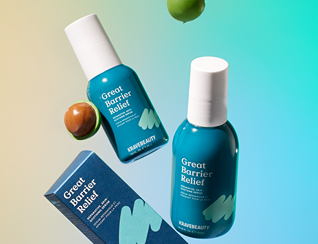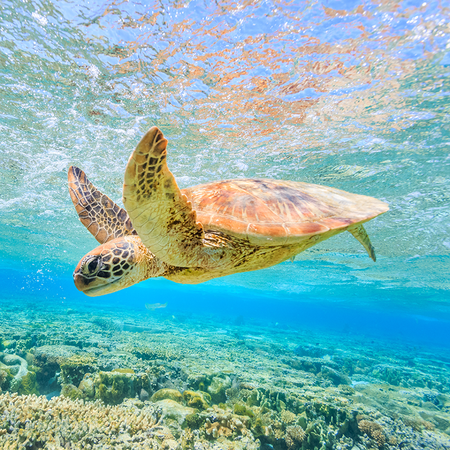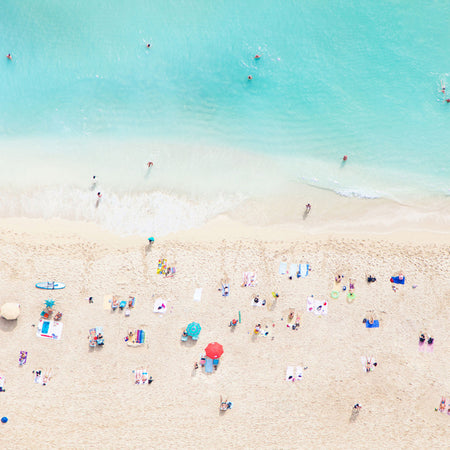Video Guide: Is the SPF system broken?

In this blog post, we will be covering the main points of Liah’s video, “Is the SPF system broken?” We’ll break down what SPF is, how it’s tested, the drama with SPF testing, and what you can do to protect yourself from the sun!
What is SPF?
In the simplest terms, SPF stands for Sun Protection Factor. As stated by the FDA, it measures how much solar energy (aka UV radiation) is required to produce sunburn on protected skin. The higher the SPF means the more it will protect your skin from harmful UV rays.
So how is SPF determined?
Now that we’re reacquainted with SPF, we’ll go over the main points of SPF testing as mentioned in Liah’s video. The process is pretty lengthy so let’s just jump right in:
1. Find and go to a 3rd-party testing lab.
2. Acquire at least 10 human volunteers.
3. Bring in “a sexy solar machine” (Thank you, Liah 😂) that mimics real UV rays.
4. Monitor volunteers for 3 days.
- On this day, volunteers also apply two different sunscreens - one is a controlled sunscreen and the other is the tester - on different areas. The application of both sunscreens must be uniform and evenly applied to ensure that the results recorded are accurate.
- They then get exposed to the same machine but at a different solar intensity.
Sounds pretty simple and straightforward, right? Well not exactly. We’ll move on to the next portion of Liah’s video which is…
The Inconsistencies & Variabilities of SPF Testing
This section of the video discussed the intricacies involved in SPF testing and how frustrating it can be to get a correct result. Enter Craig Dennyson to the shot - he works for Eurofins, an SPF testing lab, and has been involved in the development of the International Standard (the ISO) of SPF for years. Here’s a little dive on what he had to say about the complexities of SPF testing.
For starters, our own perception is already a variable. What you might think is red can seem pink to me, so a lab tech’s perception of a volunteer’s redness can vary from person to person. The lab’s setting (i.e. the internal temperature and humidity levels) can also affect the end results. Different labs can also use the same testing methodologies, but they can have inconsistencies in their results because of these variables. Now take all of that into account and you’ll be going down the SPF iceberg like we did.
Besides these variables, there is also variation between batches that can happen due to the ingredients. For example, zinc oxide is a very popular mineral filter. You can put it in your formula, but you have to be aware of how much this one ingredient can affect the end result. Once it oxidizes the performance of your SPF can go down or even change how the product smells. If it isn’t dispersed evenly within the formula, the texture can also be completely off. If any one thing is off with your batch, it can result in a product you’re unhappy with and can even affect the test results itself.
Can a test NOT involve humans?
There is also debate on whether or not human involvement in these tests is necessary. For instance, human skin is needed to see how well the SPF works, but as we all know, humans and their skin are very diverse. Labs have to take into account how melanated the skin is and also what skin types the volunteers have.
Each lab also uses a different group of human subjects from lab to lab, so it’s easy for one lab to have different end results compared to another lab. There are human technicians conducting these tests as well, and while we need them to make sense of the test findings, the way they apply the tested product can also affect the results.
To decrease these kinds of variables that are associated with human involvement, there are advancements being made to create a less invasive and more precise testing method that we can all rely on. For example, you can have a robotic arm apply sunscreen onto volunteers. That way, you’re ensuring that the application amongst all human subjects is evenly dispersed and uniform. Another alternative method is to focus on how light reflects off the skin after application rather than measuring the accumulated dose through the form of sunscreen on the skin. This means you can get results immediately, and do not have to monitor your volunteers like a hawk. There’s also been more work on skin classification methods to create a more organized understanding of skin types.
While some of these methods are still new and are works in progress, it is important to note that we are constantly seeing improvements with SPF testing as the years go by, so don’t shy away from sunscreen! Even though the testing method itself can be daunting and confusing from a consumer’s perspective, knowing this information can help you better prepare yourself and we’ll cover that in the next section.
What you can do!
So after breaking down SPF testing, here are the steps we can take in response to these complicated methods.
1. Choose a sunscreen with a company you trust!
- Transparency is not a given, however, you can request the SPF Report from companies. You also want to see what companies are doing in the background like seeing if they’re educating a consumer on SPF basics or even showing how the product came to be.
2. Check out the UV filter concentration.
- Formulators can theoretically assume how much SPF the formula would get with X percentage of UV filters. So naturally, the higher the concentration of these active ingredients, the higher the SPF. However, the final SPF number will greatly depend on the formulation. But, it gives a good guess!
- Some brands have this information readily available on the back of the packaging as it's a requirement for SPF sold in certain regions. Inspect it and reach out to the company if you have more questions.
3. Apply more sunscreen than directed and reapply.
- For sunscreen, it’s best to use a nickel size amount or to be exact 0.04 ounces of sunscreen for proper SPF protection. Apply that amount and don’t be afraid to be a little more generous. More sunscreen is never a bad thing!
4. Focus on UV protected apparel and avoid direct sunlight mid-day.
- This point is pretty self-explanatory, but yes, deck yourself out in clothes or a hat that can protect you from the sun and try to avoid the sun when you can. Vitamin D is great, but again, enjoy the sun responsibly!







